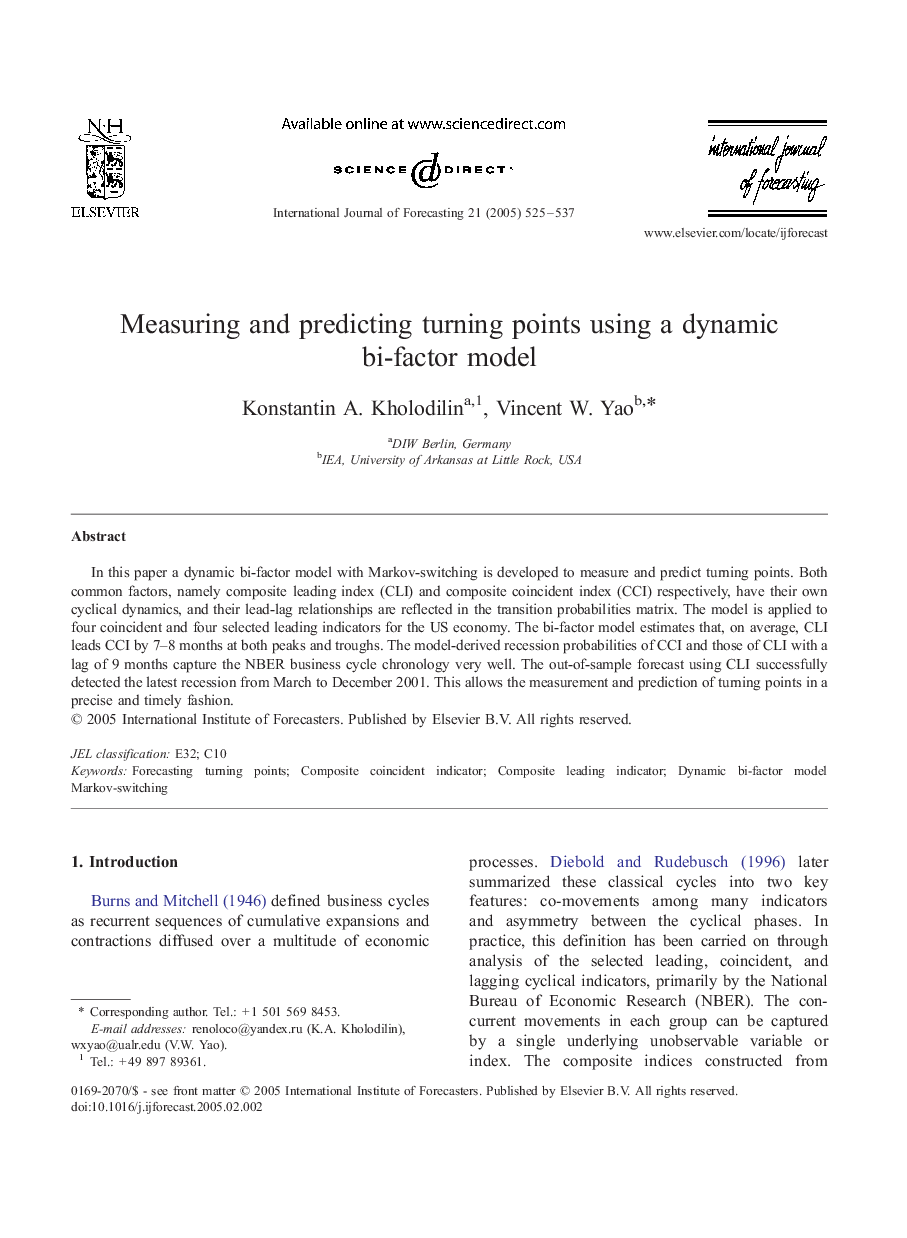| کد مقاله | کد نشریه | سال انتشار | مقاله انگلیسی | نسخه تمام متن |
|---|---|---|---|---|
| 9732536 | 1481480 | 2005 | 13 صفحه PDF | دانلود رایگان |
عنوان انگلیسی مقاله ISI
Measuring and predicting turning points using a dynamic bi-factor model
دانلود مقاله + سفارش ترجمه
دانلود مقاله ISI انگلیسی
رایگان برای ایرانیان
کلمات کلیدی
موضوعات مرتبط
علوم انسانی و اجتماعی
مدیریت، کسب و کار و حسابداری
کسب و کار و مدیریت بین المللی
پیش نمایش صفحه اول مقاله

چکیده انگلیسی
In this paper a dynamic bi-factor model with Markov-switching is developed to measure and predict turning points. Both common factors, namely composite leading index (CLI) and composite coincident index (CCI) respectively, have their own cyclical dynamics, and their lead-lag relationships are reflected in the transition probabilities matrix. The model is applied to four coincident and four selected leading indicators for the US economy. The bi-factor model estimates that, on average, CLI leads CCI by 7-8 months at both peaks and troughs. The model-derived recession probabilities of CCI and those of CLI with a lag of 9 months capture the NBER business cycle chronology very well. The out-of-sample forecast using CLI successfully detected the latest recession from March to December 2001. This allows the measurement and prediction of turning points in a precise and timely fashion.
ناشر
Database: Elsevier - ScienceDirect (ساینس دایرکت)
Journal: International Journal of Forecasting - Volume 21, Issue 3, JulyâSeptember 2005, Pages 525-537
Journal: International Journal of Forecasting - Volume 21, Issue 3, JulyâSeptember 2005, Pages 525-537
نویسندگان
Konstantin A. Kholodilin, Vincent W. Yao,